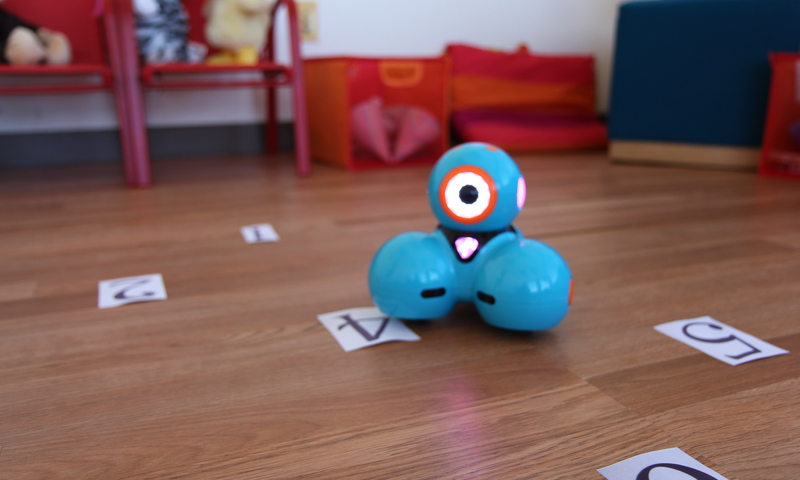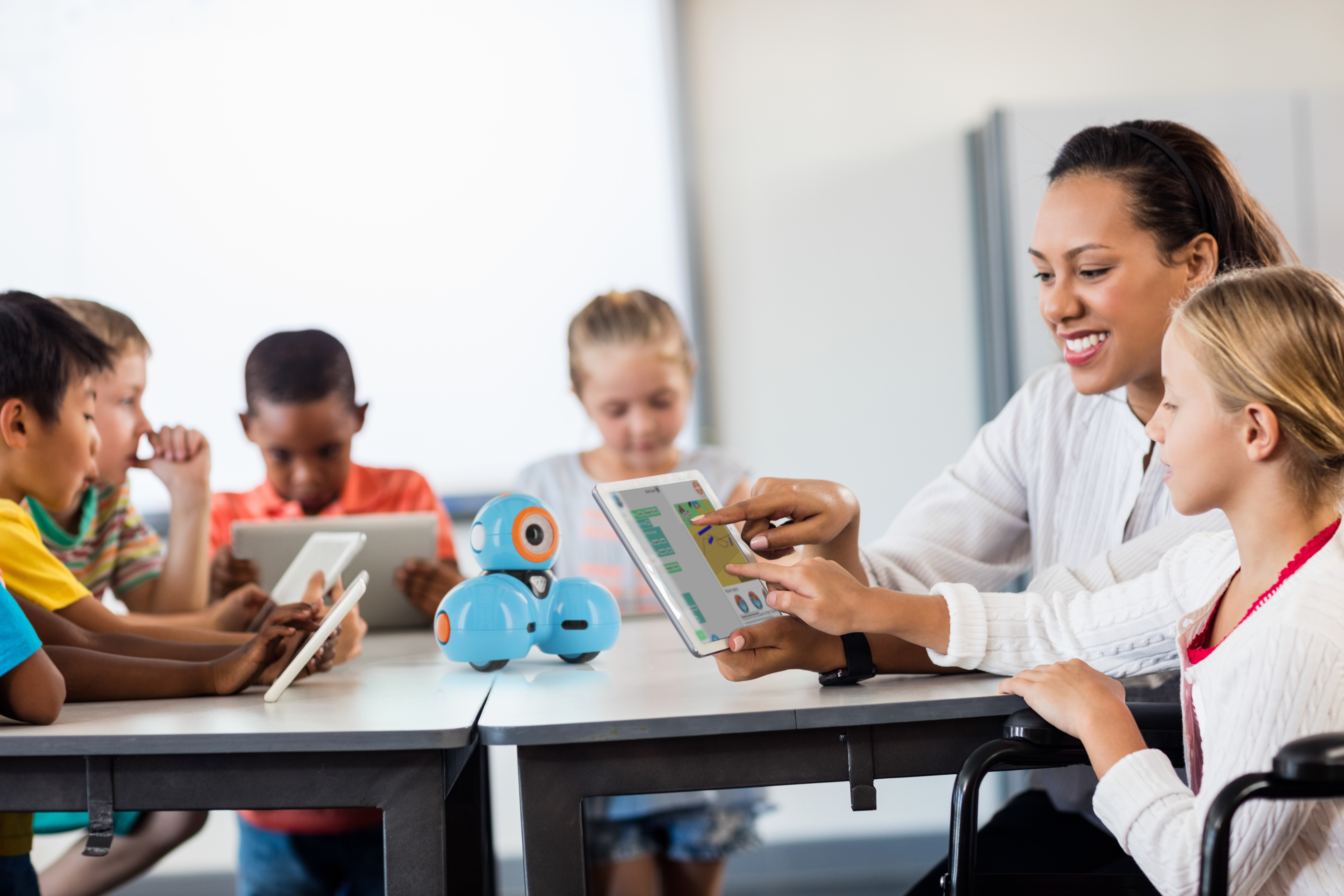Program Dash to navigate around the numbers!
What You’ll Need
![]()
Set up Time
10 minutes
- Paper or card stock
- Markers
- Tape
Mission:
Dash is a number master! Use Blockly to teach your robot to count forwards, backwards, and everything in between!
Setup:
Grab your art supplies and create some flash cards with numbers on them (suggested: 1-10).
Tape them to the ground in a random formation.
Can you program Dash to drive to each of the numbers in order? How about backwards? By even numbers? How about odd? The possibilities are endless!
What to Do
![]()
Blockly
- Use Blockly to plan and initiate a sequence of commands for Dash to navigate around the obstacle course!
- Can you program Dash to count forwards?
- How about backwards or by 2s or 5s?
- How many different ways can you program Dash to play different numbers games?
Concepts learned:
Command sequences and control flow (Path, Blockly)
Command sequences are a basic logic structure in programming. Each action in a sequence leads to the next in a predetermined order, or control flow. When programming Dash to navigate the obstacle course, children learn how to program command sequences and execute them in order.
Algorithm design (Path, Blockly)
An algorithm is a list of steps that you can follow to finish a task. When programming Dash’s movements through the obstacle course, kids can learn to think algorithmically as they break down sequences of robot behaviors and program them.
Events and Sensors (Blockly)
An event is an action that causes something to happen. Dash & Dot have the ability to detect objects, gestures, and commands, as well as respond to them. Dash has two distance sensors in the front and one in the back, and can sense objects in front and behind. Dash can also sense other robots, and detect events including button presses (on its head) or loud sounds (like a clap). As children design Dash’s route through the obstacle course, they can program responses to obstacles using the sensors, or events such as sounds or button presses.













